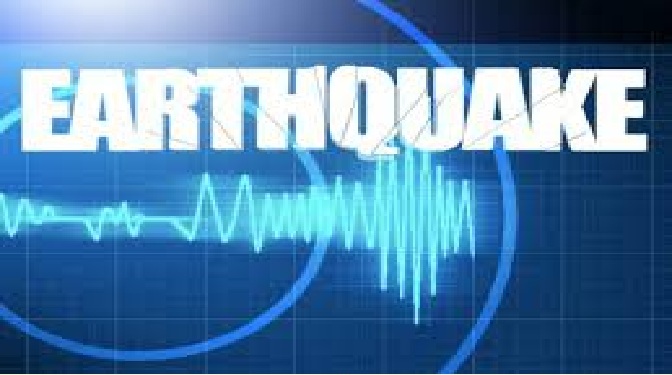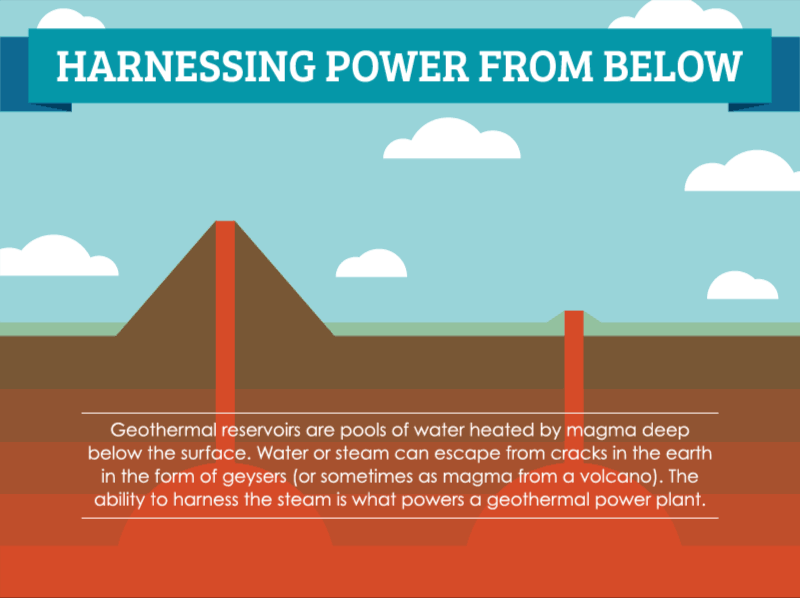How does Geothermal Drilling Trigger Earthquakes?
Seismologist David Oppenheimer of the U.S. Geological Survey Earthquakes Hazards Team explains (as told to Katherine Harmon):
Traditional geothermal drilling bores into hot rock such as sandstone that has water or steam trapped in its pore spaces and natural fractures. When a drilled hole intersects these fractures, the water flashes into steam because of the sudden drop in pressure—like bubbles that come out of a soda bottle when the cap is removed. The steam surges into the well hole, and the steam pressure at the surface spins a turbine to generate electricity. Sometimes the plant returns some of the water back into the reservoir to keep water levels up. The drilling itself does not cause earthquakes, but the steam removal and water return can do so, by producing new instability along fault or fracture lines.
At a long-term geothermal project in northern California known as the Geysers, the USGS has been monitoring seismic activity since 1975. Even though the area does not appear to have any large faults running through it, we record about 4,000 quakes above magnitude 1.0 every year. We know they result from steam withdrawal or injection because when operators begin geothermal production in a new area, earthquakes begin and when production ends, the earthquakes stop. Many minor tremors occur, but quakes as large as magnitude 4.5 have been recorded. Residents of nearby Anderson Springs often feel tremors as small as magnitude 2.0 because the town sits only a couple of kilometers above the rock fractures.
Geologists suspect that even larger earthquakes could occur on nearby faults such as the Maacama, which is adjacent to the Geysers fields. The extraction of water and heat from the porous sandstone causes it to contract, much as a sponge shrinks when it dries out. When a large earthquake does occur, the public will ask whether the geothermal projects might have played a role in causing the rocks to shift along other faults. And researchers will have to use geodetic monitoring and other data to try to figure out whether it really was a factor in changing key stress dynamics.
In addition to the traditional geothermal plants at the Geysers, a pilot project, which was suspended last September, intended to draw steam directly from the volcanic, nonporous rock called felsite that lies below the sandstone and is its heat source. Because the felsite has no natural pores, it also contains no water. To recover the heat, the project's operators would have needed to fracture the rock and circulate water through it.
First, in the short phase of the project, they would have drilled into the felsite and injected water to fracture the rock, most likely generating earthquakes in the process. Then, aided by borehole cameras revealing in which direction the fractures formed, they would have drilled a second hole to intersect the new fractures and would have produced steam by pumping water through the hot fractures linking the wells. This dry-rock geothermal approach has the potential to harness much more heat than the traditional sandstone techniques, but it can also mean more earthquakes.
To control the earthquake risk, drillers would have tried to keep the size of the fractures small and to maintain steady water flow rates. The threshold goal for earthquakes is 2.0 or lower on the Richter scale. Such deep-drilling operations would not want a repeat of events in Basel, Switzerland, where a widely felt magnitude 3.4 quake in 2006 ultimately stopped a similar geothermal project.
Unfortunately, areas that are less tectonically active also have less accessible subterranean heat sources. California, for example, has more heat (because of its location near tectonic plate margins) than, say, Texas. The whole country has some geothermal potential if we wanted to draw warmth for heating. But the resulting heat would not necessarily have the energy to spin large turbines for electricity generation.
All sources of energy—hydropower, nuclear, wind or coal—have advantages and disadvantages. Geothermal energy has the advantage of being clean and renewable, but earthquakes are a downside.
Traditional geothermal drilling bores into hot rock such as sandstone that has water or steam trapped in its pore spaces and natural fractures. When a drilled hole intersects these fractures, the water flashes into steam because of the sudden drop in pressure—like bubbles that come out of a soda bottle when the cap is removed. The steam surges into the well hole, and the steam pressure at the surface spins a turbine to generate electricity. Sometimes the plant returns some of the water back into the reservoir to keep water levels up. The drilling itself does not cause earthquakes, but the steam removal and water return can do so, by producing new instability along fault or fracture lines.
At a long-term geothermal project in northern California known as the Geysers, the USGS has been monitoring seismic activity since 1975. Even though the area does not appear to have any large faults running through it, we record about 4,000 quakes above magnitude 1.0 every year. We know they result from steam withdrawal or injection because when operators begin geothermal production in a new area, earthquakes begin and when production ends, the earthquakes stop. Many minor tremors occur, but quakes as large as magnitude 4.5 have been recorded. Residents of nearby Anderson Springs often feel tremors as small as magnitude 2.0 because the town sits only a couple of kilometers above the rock fractures.
Geologists suspect that even larger earthquakes could occur on nearby faults such as the Maacama, which is adjacent to the Geysers fields. The extraction of water and heat from the porous sandstone causes it to contract, much as a sponge shrinks when it dries out. When a large earthquake does occur, the public will ask whether the geothermal projects might have played a role in causing the rocks to shift along other faults. And researchers will have to use geodetic monitoring and other data to try to figure out whether it really was a factor in changing key stress dynamics.
In addition to the traditional geothermal plants at the Geysers, a pilot project, which was suspended last September, intended to draw steam directly from the volcanic, nonporous rock called felsite that lies below the sandstone and is its heat source. Because the felsite has no natural pores, it also contains no water. To recover the heat, the project's operators would have needed to fracture the rock and circulate water through it.
First, in the short phase of the project, they would have drilled into the felsite and injected water to fracture the rock, most likely generating earthquakes in the process. Then, aided by borehole cameras revealing in which direction the fractures formed, they would have drilled a second hole to intersect the new fractures and would have produced steam by pumping water through the hot fractures linking the wells. This dry-rock geothermal approach has the potential to harness much more heat than the traditional sandstone techniques, but it can also mean more earthquakes.
To control the earthquake risk, drillers would have tried to keep the size of the fractures small and to maintain steady water flow rates. The threshold goal for earthquakes is 2.0 or lower on the Richter scale. Such deep-drilling operations would not want a repeat of events in Basel, Switzerland, where a widely felt magnitude 3.4 quake in 2006 ultimately stopped a similar geothermal project.
Unfortunately, areas that are less tectonically active also have less accessible subterranean heat sources. California, for example, has more heat (because of its location near tectonic plate margins) than, say, Texas. The whole country has some geothermal potential if we wanted to draw warmth for heating. But the resulting heat would not necessarily have the energy to spin large turbines for electricity generation.
All sources of energy—hydropower, nuclear, wind or coal—have advantages and disadvantages. Geothermal energy has the advantage of being clean and renewable, but earthquakes are a downside.
Open too :


Post a Comment for "How does Geothermal Drilling Trigger Earthquakes?"
Silahkan berkomentar disini